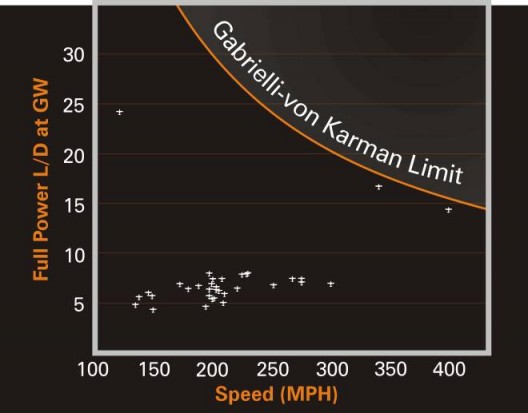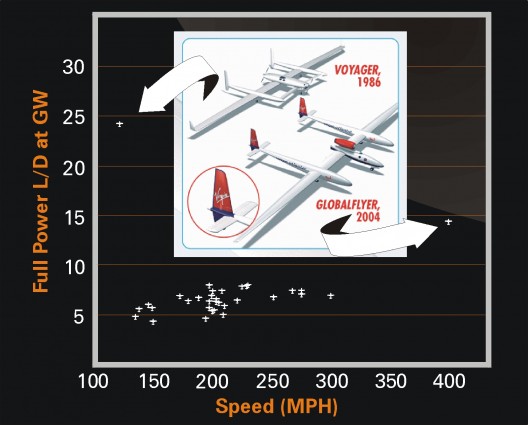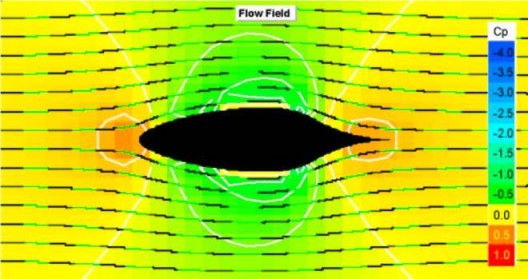Conventional wisdom says that an airplane is a collection of compromises – a premise seemingly borne out in practice. Bigger wings mean slower speeds, but more lift. Smaller engines mean less performance, but better economy. Roomier cockpits mean lower fuel mileage and reduced cross-country range. Everybody knows these things.
But what if, applying the Firesign Theater’s comedic dictum, “Everything you know is wrong,” someone shook those bits of conventional wisdom and sorted out a new way of looking at an airplane? It’s been done before. Burt Rutan’s wildly creative approach to seeing past convention gave us the Varieze, Catbird, Boomerang, Proteus, Voyager, and Spaceship One, among others. Because such creations don’t follow the usual scientific method of changing one variable at a time, but seem to take multiple detours around “normal” all at once, the results take us by surprise.
John McGinnis, of Kalispell, Montana, seems to delight in taking uncomfortable turns around convention. His presentation at the fourth annual Electric Flight Symposium at Rohnert Park, California on April 23 resounded to the snap of bullwhips, the earliest man-made supersonic device, as an example of something that gently amplifies a subsonic input (through a supple, connected medium) to create high-drag velocities at the tip. (McGinnis contends that we do the same thing with our airplanes, with atmospheric viscosity serving as the leather.) Although reticent about revealing specific details of the Synergy aircraft he has designed, is building, and has entered in the July 2011 Green Flight Challenge, McGinnis did share some of the thought process he is following, and more importantly, the steps he is taking to achieving synergy in his eponymous aircraft.
The author has signed a non-disclosure agreement with McGinnis to get a more in-depth look at the approach he took, and its futuristic result.
Twenty-first century aerodynamicists face a quantum-theory-like problem, still hanging around from the 18th century. D’Alembert’s Paradox was a 1752 answer to a puzzle posed by a German mathematics group. In solving it, Jean le Rond d’Alembert proved that there is no drag on a body moving at a steady velocity through an inviscid fluid.
Mathematically, it works, but collectively we “know” it could not be true in practice for a viscous fluid, such as air or water. Otherwise, any airplane would have a lift-to-drag ratio approaching infinity. d’Alembert left the problem for future “geometers” to solve, and Team Synergy is taking on that challenge.
If, as McGinnis provocatively says, d’ Alembert’s “perfect fluid” paradox is actually the true paradigm of fluid dynamics, why is there no drag-free lunch? Why do our smaller aircraft turn out to be so terribly inefficient? Or are they, really?
Theodore von Karman and his student Gabrielli were reviewing the power required for planes, trains and automobiles to achieve varying speeds. With the technology of the 1950s, not many approached the line the two scientists hypothesized as the movable limit of then current technology. When Goldschmied drew upon their work to publish an apples-to-apples comparison of general aviation aircraft against the Gabrielli – von Karman limit, the results were shocking.
McGinnis notes that there are only two currently existing manned aircraft (both from Burt Rutan), that approach the GvK limit under 400 MPH, the rest falling far short. Note that the chart shows efficiency as measured by lift-to-drag ratios. Since the penalty of heavier-than-air flight would seem to be entirely responsible for any difference between aircraft and like-powered, more efficient ground vehicles of the same weight moving at the same speed, McGinnis teaches that the most direct route to obtaining higher fundamental efficiency requires a reduction in induced drag while simultaneously targeting friction drag.
Historically, lower induced drag has only been a top priority at glider speeds and airliner altitudes, and has most often been achieved with longer wing span. Long wing spans have shortcomings, including higher weight and aeroelasticity problems, especially as we try to fly faster and carry more weight. Overcoming these requires a new lightweight approach to reducing induced drag at higher airspeeds. (McGinnis’ solution is patent-pending and flight tested at one-quarter scale, but remains confidential at present.)
McGinnis explains, “Combine the structural and induced drag priorities with a laminar fuselage, optimized airfoils, and comprehensive integration of all the elements on the airplane, and you get synergy, the concept. It wasn’t until we relegated the siren song of ‘pure efficiency’ to second place in favor of something more practical (for the wannabe jet-jockeys in all of us) that we got Synergy, the airplane.”
McGinnis lists six steps to creating Synergy; laminar flow, wake immersed propulsion, pressure thrust, low induced drag achieved through high span efficiency, open thermodynamics, and optimum displacement waveform. These are discussed in detail on the Oshkosh 365 discussion board, and will be explained as they apply to Synergy when McGinnis decides that he can unveil the work properly.
Integration of each facet of the design brings about an added efficiency, with numbers finally totaling more than the sum of the aircraft’s parts analyzed by conventional formula. Fuselage drag, which would normally be a parasitical element on the craft, is enhanced by the use of Goldschmied technology (see the CAFE Foundation technical library) to achieve the same “higher than 100-percent” propulsive efficiencies. McGinnis says the decades of data proving such “poorly worded heresy” was true “puts the dynamic pressure basis for such artificial limits in a tenuous position.”
Due to the single-minded emphasis on overall simplicity that McGinnis says is “non-negotiable,” Synergy will be relatively uncomplicated for a high performance aircraft, benefiting from the advanced 3-D integration of many design elements. The fact that this is being done with no corporate funding as a private effort speaks to McGinnis’ faith in his precepts.
Team Synergy is working diligently toward a memorable debut at Charles M. Schulz Memorial Airport in Santa Rosa, California for the July 2011 Green Flight Challenge, and like all the GFC competitors, hopes to advance aviation beyond what we now know and understand as possible.
In a recent email, McGinnis told the author, “Electric aircraft are possible, today, but only by applying everything we know about drag reduction in an integrated aerostructural propulsive design. Reaching the limits of the performance we can reasonably demand gives a six fold improvement over the power requirements upon which the nay-saying estimates are based. We simply cannot afford to ignore induced drag and turbulent flow in an electric airplane. We shouldn’t have ignored them in our fossil fueled airplanes, either.”




Comments 2
Great article, Dean. I’ve been in touch with John, also, and have seen the future!
Missed you at Tehachapi.
Frank
Well written article that gives open minded individuals a new perspective into the dimension of a paradigm shift in aviation.
Roy